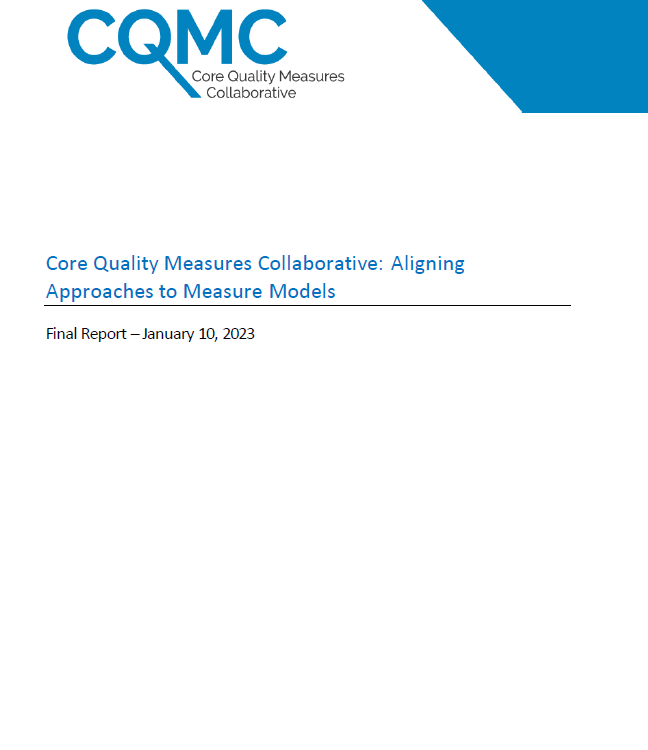Transformations to Reduce Quality Measurement Burden
To clear the way for innovation in family medicine practices, accelerate the escape from fee-for-service care, and truly alleviate administrative complexity, the AAFP advocates for state and federal policies that encourage and reward practice transformation. Among these efforts, the Academy calls for simplification of the complex maze of measures and measurement processes that hinder clinicians pioneering new payment models.
Introduction
The Academy’s vision of a quality measurement strategy for primary care centers on the creation of large data stores and advances in technology changing the fundamental process of measurement and improvement.
Achieving this vision would drive large-scale improvements in health, health care, and cost reduction. The Academy:
- distinguishes between quality measures that are used for internal quality improvement (QI) efforts and those used for value-based payment and public reporting, because the intended use determines the focus of measures and the rigor with which criteria of importance, measurability, and achievability are applied;
- addresses the leadership role of physicians, the critical role patients and caregivers have in quality measurement and improvement, and the equalization of the partnership between patients/caregivers and clinicians, enabled by more actionable information and sophisticated primary care teams;
- considers the importance of systems-level attribution and measurement, shared responsibility for outcomes, and community involvement in improvement efforts; and
- discusses the most important features of primary care that are responsible for improved outcomes and lower costs.
Future efforts to develop measures for primary care should be directed toward these areas.

Vision and Principles of a Quality Measurement Strategy for Primary Care
The AAFP's principles are meant to guide health care policy and advocacy, direct development of quality measures, influence value-based payment measurement efforts, and expand on work being done to inform improvement of health care quality.
The AAFP does not itself develop measures, but advises developers and stakeholders to ensure that the voice of family medicine is heard. The AAFP nominates its members as representatives to external groups (more than 50 work groups and panels) that develop and endorse measures and respond during measure comment periods. The Academy also participates in Primary Care Measures That Matter, and the Partnership for Quality Measurement.
A large contributor to the quality measurement burden is the variation of measures used across payers. The AAFP participates in multiple efforts to harmonize quality measures, such as the Core Quality Measures Collaborative and CMS’ Universal Foundation. The CQMC is a public-private, multi-stakeholder effort working to define core measure sets for various specialties. With significant input from the AAFP, it developed an Accountable Care Organizations and Patient Centered Medical Home/Primary Care Core Measure Set for primary care. Harmonization has begun, but much more work is needed.
The AAFP participates in several efforts working on standardizing measures and the interoperability needed for capturing data and reporting measures. The Academy provides the family medicine voice in national efforts to standardize quality data, including NQF, USCDI+Quality, Da Vinci, CQMC, and others.
The AAFP participates in CQMC work groups and is among more than 70 member organizations helping to address the proliferation of measures by facilitating cross-payer measure alignment through the development of core sets of measures by clinical area to assess the quality of U.S. health care.

CQMC: Aligning Approaches to Measure Models
Value-based payment (VBP) models rely on the accurate measurement of care and outcomes to incentivize and improve quality. A challenge to VBP success is a lack of alignment across programs and payers. Fragmentation in the measures used in different programs across payers leads to inconsistent signals on “good performance,” preventing clinicians from focusing their quality improvement efforts. Participants also report that lack of alignment results in more time spent on data collection and reporting and less time on patient care and quality improvement.
The AAFP advocates for federal and private-payer policy a policy limiting the number of quality measures that must be reported by primary care. The Academy also is focused on driving toward measures the truly gauge the value of primary care, including new measures focused on the 4 Cs: (first)Contact, Continuity, Coordination, and Comprehensiveness.